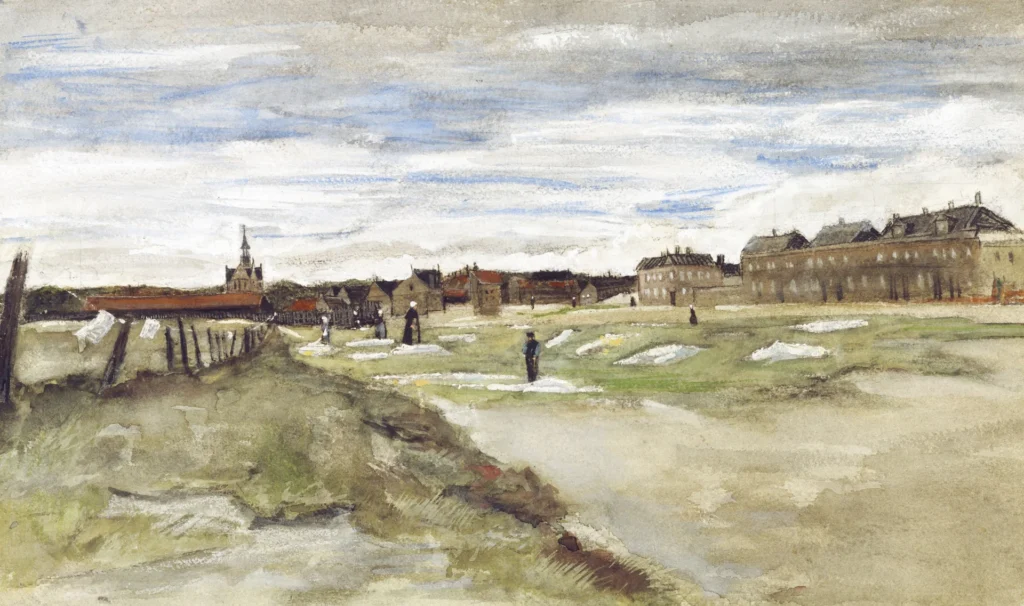Bleaching Ground At Scheveningen (1882)
Vincent van Gogh's 'Bleaching Ground at Scheveningen' is a captivating drawing from 1882 that depicts a sun-bleached laundry scene in the coastal town of Scheveningen, Netherlands. Executed on coarse Torchon paper, the artwork exemplifies van Gogh's spontaneous technique, emphasizing his skill in capturing fleeting moments with immediacy. The scene's motion is beautifully conveyed through the whites billowing from a fence, bringing life to an otherwise tranquil landscape. This piece not only reflects van Gogh's artistic innovation but also offers a glimpse into everyday life during this period.
Year 1882
About the Artwork
In 1882, while living in The Hague, Vincent van Gogh created 'Bleaching Ground at Scheveningen', a drawing that reveals his fascination with the ordinary across the Dutch landscape. The bleaching ground, a common sight in coastal towns, symbolized both simplicity and immediate beauty. Van Gogh's choice of coarse Torchon paper allowed him to work quickly, capturing the essence of the moment while incorporating his unique artistic flair. This drawing reveals van Gogh's commitment to portraying everyday life, showcasing the interaction between nature and human activities, which greatly influenced later movements in art. The scene embodies the harmony of domestic life against a backdrop of natural beauty, embodying the artist's deep connections to the world around him.
Did You Know
Van Gogh often visited Scheveningen, a coastal town, finding inspiration in its landscapes and everyday life. His time spent there significantly influenced his artistic development during the early stages of his career.
The use of coarse Torchon paper in ‘Bleaching Ground at Scheveningen’ reflects van Gogh’s experimental approach to materials, allowing him to emphasize texture and spontaneity in his work.
The theme of laundry in art serves as a metaphor for domestic life and labor. Van Gogh’s portrayal of the bleaching ground aligns with a broader tradition where everyday activities are elevated to subjects of artistic significance.










